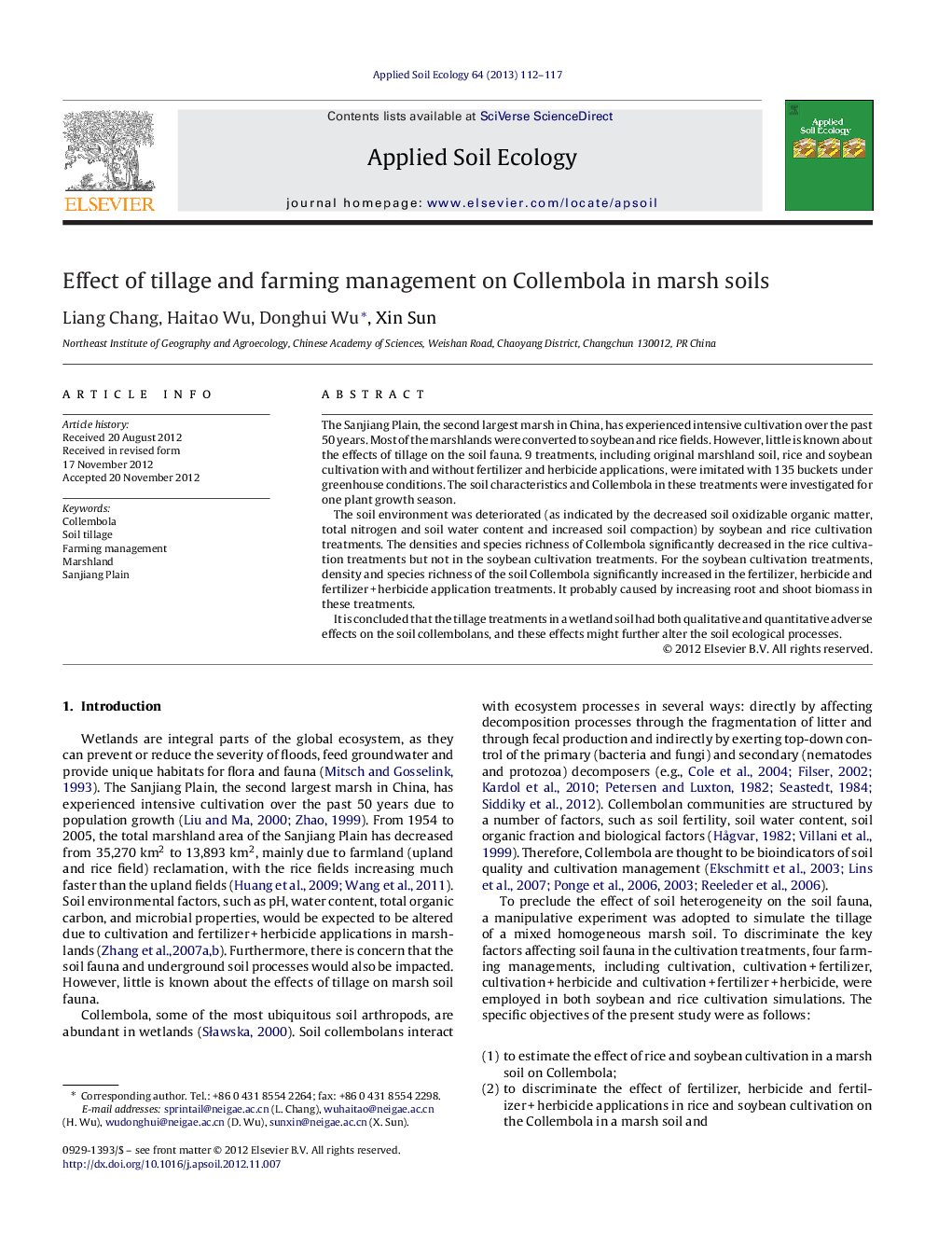| Article ID | Journal | Published Year | Pages | File Type |
|---|---|---|---|---|
| 4382464 | Applied Soil Ecology | 2013 | 6 Pages |
The Sanjiang Plain, the second largest marsh in China, has experienced intensive cultivation over the past 50 years. Most of the marshlands were converted to soybean and rice fields. However, little is known about the effects of tillage on the soil fauna. 9 treatments, including original marshland soil, rice and soybean cultivation with and without fertilizer and herbicide applications, were imitated with 135 buckets under greenhouse conditions. The soil characteristics and Collembola in these treatments were investigated for one plant growth season.The soil environment was deteriorated (as indicated by the decreased soil oxidizable organic matter, total nitrogen and soil water content and increased soil compaction) by soybean and rice cultivation treatments. The densities and species richness of Collembola significantly decreased in the rice cultivation treatments but not in the soybean cultivation treatments. For the soybean cultivation treatments, density and species richness of the soil Collembola significantly increased in the fertilizer, herbicide and fertilizer + herbicide application treatments. It probably caused by increasing root and shoot biomass in these treatments.It is concluded that the tillage treatments in a wetland soil had both qualitative and quantitative adverse effects on the soil collembolans, and these effects might further alter the soil ecological processes.
► Soil environment was deteriorated under soybean and rice cultivation. ► Both soybean and rice cultivation in wetland soils can affect soil Collembola. ► Water logging and soil compaction were major causes of collembolan reduction. ► Rice cultivation decreased densities and species richness of Collembola. ► Soybean cultivation did not affect density but reduced species diversity.
